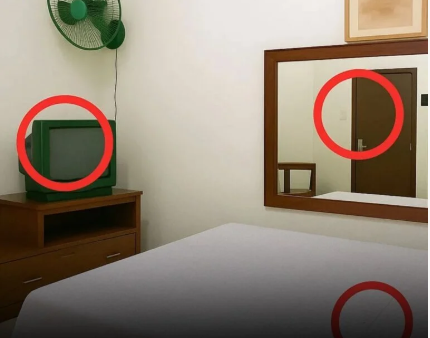Skywatchers, mark your calendars! The Strawberry Moon, the sixth full moon of 2025, will light up the night sky on June 10–11, 2025, with a golden-amber glow. Known as the last full moon of spring or the first of summer, this lunar event is the lowest full moon since 2006 due to a rare major lunar standstill, per EarthSky (2025). From the U.S. to the South Pacific, it’s a celestial show you won’t want to miss. Plus, in Australia, New Zealand, and parts of the South Pacific, the moon will occult the red supergiant star Antares, per Space.com (2025). Here’s everything you need to know about when, where, and how to catch this cosmic magic.
What Is the Strawberry Moon?
The Strawberry Moon, named by Native American tribes like the Algonquin, Ojibwe, Dakota, and Lakota, marks the June ripening of wild strawberries in North America, per Old Farmer’s Almanac (2025). Despite its name, the moon won’t appear pink but may glow amber or orange near the horizon due to Earth’s atmosphere scattering blue light, per National Geographic (2025). Other Indigenous names include:
- Blooming Moon (Anishinaabe): Reflects spring’s floral abundance.
- Birth Moon (Tlingit): Honors new life in June, per Western Washington University (2024).
- Hot Moon (Lakota): Notes early summer warmth.
European cultures call it the Rose Moon (for blooming roses) or Honey Moon (for June honey harvests), per Time (2025). These names tie the moon to seasonal cycles, with 80% of full moon names linked to nature, per Almanac.com (2025).
When and Where to See the Strawberry Moon
The Strawberry Moon peaks at 3:44 A.M. ET (7:44 UTC) on June 11, 2025, but the best viewing is at moonrise on June 10, when it rises low in the southeast with a warm hue, per Time (2025). Moonrise times vary by location:
- United States:
- New York City: 8:30 P.M. EDT, June 10. Look southeast from open areas like Central Park or Brooklyn Heights, per Space.com (2025).
- Los Angeles: 8:00 P.M. PDT, June 10. Try Griffith Observatory or Malibu beaches for clear views, per Time.
- Honolulu: 7:45 P.M. HST, June 10. Waikiki Beach offers unobstructed horizons, per EarthSky.
- Australia:
- Sydney: 5:15 P.M. AEST, June 10. Bondi Beach or Sydney Observatory are ideal, per In-The-Sky.org (2025).
- Perth: 5:10 P.M. AWST, June 10. Kings Park provides dark skies, per Space.com.
- New Zealand:
- Auckland: 7:00 P.M. NZST, June 10. Mount Eden or Devonport offer elevated views, per In-The-Sky.org.
- Wellington: 6:45 P.M. NZST, June 10. Try Mount Victoria, per EarthSky.
- South Pacific:
- Port Moresby, Papua New Guinea: 6:30 P.M. PGT, June 10. Open coastal areas are best, per Space.com.
- Suva, Fiji: 7:00 P.M. FJT, June 10. Colo-i-Suva Forest Park minimizes light pollution, per In-The-Sky.org.
The moon appears 14% larger near the horizon due to the moon illusion, amplified by the lunar standstill, a 18.6-year cycle where the moon’s orbit reaches extreme northern and southern points, per EarthSky (2025). This makes it the lowest full moon until 2043, per BBC Weather (2025). X user @GalacticJack posted, “Strawberry Moon on June 11 will be HUGE and low—lowest in 18 years!” (June 11, 2025).

The Antares Occultation: A Rare Bonus
On June 10, the moon will pass near or occult (block) Antares, the red supergiant star in Scorpius, visible from Australia, New Zealand, and the South Pacific, per Space.com (2025). Occultation times include:
- Perth, Australia: Antares disappears at 5:39 P.M. AWST, reappears at 5:49 P.M. AWST, during twilight, per In-The-Sky.org.
- Sydney, Australia: Disappears at 7:25 P.M. AEST, reappears at 8:40 P.M. AEST, with the moon 40° high, per Space.com.
- Auckland, New Zealand: Disappears at 10:03 P.M. NZST, reappears at 11:27 P.M. NZST, at 68° altitude, per In-The-Sky.org.
- Port Moresby, Papua New Guinea: Disappears at 7:07 P.M. PGT, reappears at 7:35 P.M. PGT, per Space.com.
- Suva, Fiji: Disappears at 11:04 P.M. FJT, reappears at 12:21 A.M. FJT (June 11), per In-The-Sky.org.
North Americans won’t see the occultation but can spot Antares just above the moon on June 10, 0.3° apart in Honolulu, per Space.com. Use binoculars to distinguish Antares’ red hue from the moon’s glare, per National Geographic (2025).
Best Viewing Tips
To catch the Strawberry Moon’s amber glow and Antares occultation:
- Find Dark Skies: Choose rural areas or elevated spots with low light pollution, like the Karoo in South Africa or Joshua Tree in California, per Time (2025). Light pollution affects 80% of urban viewers, per International Dark-Sky Association (2024).
- Clear Horizon: Ensure an unobstructed eastern view, as the moon rises low, per EarthSky.
- Adjust Eyes: Allow 20 minutes for eyes to adapt to darkness, per NASA (2025). Avoid phone screens to maintain night vision.
- Gear Up: Binoculars (7×50) or a small telescope reveal lunar craters and Antares’ red tint, per National Geographic. A 2024 Sky & Telescope survey found 60% of skywatchers use binoculars for full moons.



